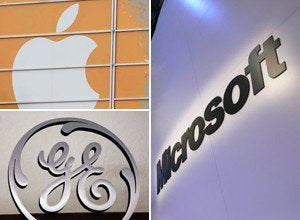
When was the last time you headed to your local supermarket to get a particular bottle of detergent because you saw how it had performed an impressive cartwheel within a tiny, blinking online ad?
I highly doubt you would have if it was your first point of contact with the brand, and even if the said bottle of detergent was able to compete at the Olympics for its impressive gymnastics routine.
Thinking beyond the hard sell
We're consistently inundated by the hard sell techniques of different brands every day.
I did a very simple experiment recently to measure the total number of brands who would demand for my attention over the course of 24 hours. The final tally came up to 63 brands in over 81 ads, including glitzy print advertisements, radio sing-a-longs, Facebook advertisements, and online display banners.
My daily morning drive to work has no less than three brands competing for my attention on the local radio station in the course of half an hour.
Honestly, it was a massive headache, and frankly, many of these promotional ads were forgettable.
Promotional ads are not drastically different on social media. Many brands rewrite promotional messages on these platforms creatively, and some forget primarily about engagement with their fans.
Would brands have to consistently use irresistible discounts, one for one deals, and excessive promotions to win their consumers over? Is it sustainable?
Thinking beyond a return on investment
Consumers are getting smarter, wiser, and less easily taken by the glitz of shiny campaigns. They're able to smell product placement from a mile away. They're wary of the hard-sell.
Consumers are now looking for brands they can identify with. Consumers are looking for brands which positively impact their communities and society tangibly. Brands which are able to contribute to a consumer's well being.
Brands, which are, in short, meaningful.
Some brands attempt at storytelling. A lesser number of brands would consider humanizing their offering to forge connections with their potential customers. It's a constant competition where brands try to outdo each other on prices, features, and snazzy campaigns.
The most astute brands don't just sell experiences -- they consider the value they can contribute back to the community.
Adding value is no longer an option. According to the Meaningful Brands research by global media group Havas Media, improving wellbeing is becoming an imperative which brands need to consider. Over 72 percent of consumers polled worldwide trust companies more if they produce responsible goods.
Furthermore, the global poll illustrated how consumers believed that only 20 percent of brands worldwide added a significant value in improving one's quality of life.
Thinking about a return on meaning
Surely, rather than continually thinking about a 'return on effort' and a 'return on investment,' let us also start considering a 'return on meaning' for our brands.
It's time to think beyond simply pegging brand strength to brand value and equity. Let us also consider how brands can remain relevant by adding more value in our quality of life -- whether as marketers, as brands, or as consumers.
Is your brand actively adding meaningful value today?
